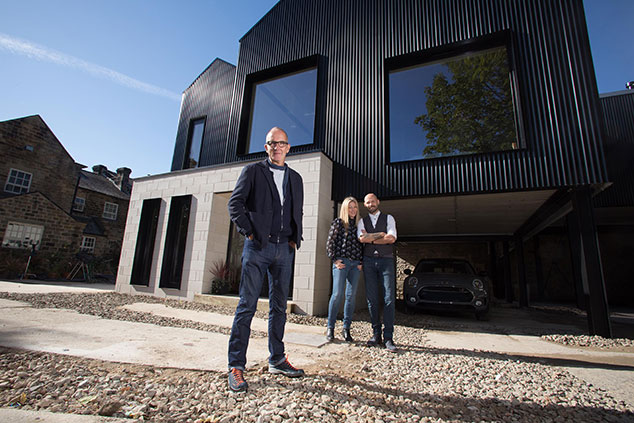
There are several advantages to building your own house, the obvious being that you can have it designed to your exact specifications and don’t have to sacrifice things like a dining room to get a decent garden. On top of that, it should be cheaper to build your ideal home than to buy an already-built one exactly like it, should it even exist. It should also be easier and cheaper to add in features such as energy-efficient insulation or underfloor heating.
Just bear in mind that self-building is a long, arduous process. While stress levels might not reach those experienced by people on Grand Designs – who come armed with ambitious plans only to discover their innovative German modular machinery won’t fit down the access road – it won’t be a walk in the park.
The first step is to find a suitable plot of land. As of April 2016, councils have had to keep a register of aspiring self- and custom-home builders. Once you’ve signed up to a register, the onus is on your council to find you a suitable serviced plot within three years. This is a plot that has electricity, water and waste water connections, as well as access to a public road, says consumer group Which.
Alternatively, look at residential property portals, or online resources such as the Self Build Portal, PlotBrowser and PlotFinder. It’s also worth asking your local council about land where planning permission has been granted, but where nothing has been built.
Next, you need to decide how involved you want to be in the process. If you have the spare time and patience, you can organise the design and construction yourself. Alternatively, you can work with a developer to design and build the property.
“The main benefit of [this] is that you can get the bespoke design you want (or at least choose between various designs) without the stress of obtaining planning permission or managing the project yourself,” says Which? You might also want to consider modular (factory-built) or kit homes. “In theory, factory-built elements are subject to greater quality control (meaning fewer snags) and can be created at great speed and volume.”
Finally, you need to work out a budget. Be realistic about how much the entire project will cost, and factor in breathing room for unexpected costs. The typical cost of building your own house is £1,500 to £2,000 per square metre, according to Kevin McCloud of Grand Designs, quoted in the Financial Times.
On top of the price of the land, look into the cost of architects’ fees, builders, materials, fixtures and fittings, as well as a self-build insurance policy and insurance against storm damage, fire, theft and public liability. You will also have to account for your living expenses during the build, so enough to cover rent or mortgage payments. If you’re starting to feel dejected, keep in mind that you can reclaim the VAT on the cost of building materials once construction is finished, which can really add up.
It’s important to be aware that you won’t be able to get a standard residential mortgage for a project like this – instead, you will have to apply for a self-build mortgage, unless you have enough cash in the bank. The biggest difference from a standard mortgage is probably that the money is released to you in stages of the building process. This is designed to ensure it doesn’t run out halfway through the build. Before you can get a self-build mortgage, you’ll need planning permission and a sizeable deposit.